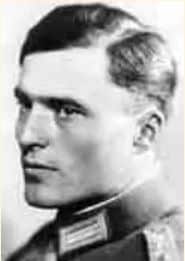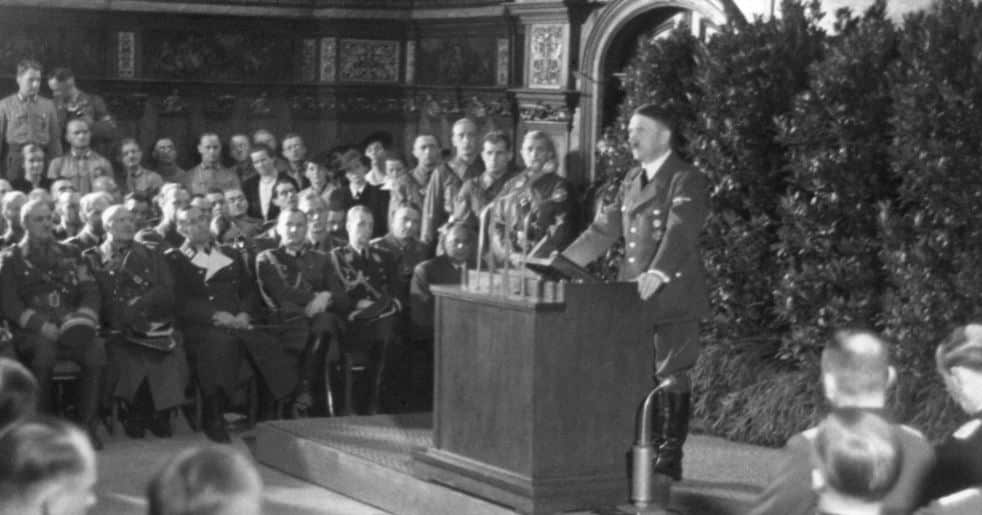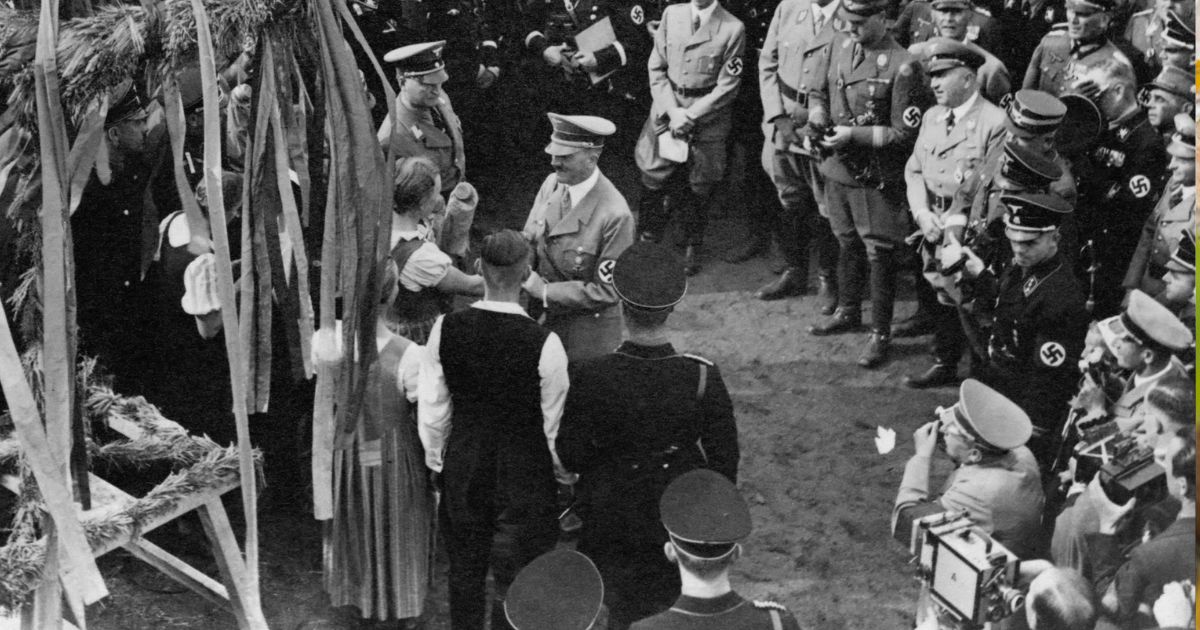This series of posts at looks at Hitler’s hearing impairment. This is the second posting in this series and it is certainly not a tribute, but an interesting discussion of a hearing loss that was accumulated over a lifetime by an historical figure. This series is a re-visit of a topic that was first discussed at Hearing International August 27-September 10, 2013. While much of the content will be taken from the 2013 originals, components have been added in this visitation of Hitler’s Hearing Loss. At the end of this three-week series, there will be an estimate of his likely hearing impairment.
While history will never know the extent of this impairment, there is evidence that can be compared with what we know today that gives us clues as to the extent of his hearing impairment. Did this have any effect on behavior? Did this cause miscommunication among trusted generals and others? Other issues?
At the end of our discussion …you decide….RMT
The second part of the story of Hitler’s Hearing Loss begins with the most important person in the plot, Claus Philipp Maria Schenk Graf Justinian von Stauffenberg. known to history as Claus Schenk Graf von Stauffenberg.
In the annals of World War II, there are heroes whose names echo through history, revered for their valor and sacrifice. But there are also heroes who have been forgotten, their stories lost amidst the chaos of war. Claus Schenk Graf von Stauffenberg, one of the prime movers behind the July 20, 1944 Valkyrie plot to assassinate Hitler, falls into this latter category. Today, we delve into the life and motivations of this courageous figure who sought to change the course of history from within.

Claus von Stauffenberg
Born in 1907 at Stauffenberg Castle in Jettingen-Scheppach, Swabia, Claus von Stauffenberg came from an aristocratic background. His early education instilled in him a love for literature, but he eventually chose a military career. Joining the Bamberger Reiter- und Kavallerieregiment 17 in 1926, he was commissioned as a leutnant and studied modern weapons at the Kriegsakademie in Berlin. Despite the advent of modern technology, Stauffenberg maintained a deep appreciation for the use of horses in the German military.
Why Stauffenberg Became Involved
As the tide of war turned against Germany, Stauffenberg became increasingly disillusioned with Hitler’s regime. While he shared some nationalist sentiments, he found much of the Nazi Party’s ideology repugnant and never joined their ranks. As a devout Catholic, he was appalled by the mistreatment of Jews and the suppression of religion. Stauffenberg firmly believed that Germany was being led to disaster and that Hitler must be removed from power.
Stauffenberg’s military career took him to various battlefields, including Poland, France, the Soviet Union, and Tunisia. It was during his time in Tunisia in 1943 that he sustained severe injuries when his vehicle was strafed by a fighter bomber. Losing his left eye, right hand, and two fingers on his left hand, Stauffenberg spent months in a Munich hospital recovering from his wounds. These injuries earned him the Wound Badge in Gold and the German Cross in Gold for his courage.

The Plot to Kill Hitler
By this point, Stauffenberg had become resolute in his conviction that Hitler’s removal from power was necessary. In September 1943, he was introduced to Henning von Tresckow, a key member of the German resistance, who shared his beliefs. Stauffenberg joined forces with Tresckow and the conspirators, who saw an opportunity within the Replacement Army to launch a coup. Operation Valkyrie, initially designed as a contingency measure to assume control in times of internal disturbances, became the framework for their audacious plan.
Stauffenberg played a pivotal role in the plot to assassinate Hitler and take control of Germany. With his regular access to the Führer, he was uniquely positioned to gain the trust and support of German military leaders once Hitler was eliminated. Despite the risks of committing high treason and the knowledge that failure was likely, Stauffenberg believed that their actions would demonstrate to the world that not all Germans supported the Nazi regime.
The Bomb
On July 20, 1944, Stauffenberg executed his daring attempt on Hitler’s life. Carrying a briefcase bomb into the briefing room at Wolfsschanze, he intended to place it as close to Hitler as possible. However, circumstances led to only one bomb being armed, and a change in meeting location shielded Hitler from the full impact of the explosion. While four people were killed and survivors sustained injuries, Hitler himself emerged with only minor wounds.
The failed assassination attempt marked a turning point in Stauffenberg’s life. Captured by the Gestapo, he was executed the following day, along with other conspirators. Stauffenberg’s actions, however, left an indelible mark on history. The July 20 plot showcased the resistance within the German military against Hitler’s regime and stands as a testament to the unwavering bravery of those who dared to challenge tyranny from within.
In retrospect, Claus Schenk Graf von Stauffenberg emerges as a forgotten hero of World War II, a figure who risked everything in his quest for a better future for Germany. His story serves as a reminder that courage can arise in the most dire circumstances, and that even the most formidable obstacles can be confronted. As we honor the heroes of history, let us not forget those whose names have faded from memory, for their sacrifices are no less significant.
…But, What about Hitler’s Hearing Loss? Up next we will make that case – Click here for Part 3
References:
Answers (2018) What were Adolf Hitler’s Policies. Retrieved January 10, 2018.
Astridge, P. (2011). General Helmuth Stieff. PAULA ASTRIDGE.COM. Retrieved January 10, 2018.
BBC (2014). Heinrich Himmler (1900-1945). Retrieved January 9, 2018.
Aps (2005). Ersatzheer in the second half of 1944. Axis History Forum. Retrieved January 10, 2018.
Gedenkstatte Deutscher Widerstand (2016). HENNING VON TRESCKOW. Retrieved January 9, 2018.
Gutman, I. (1990). Encyclopedia of the Holocaust. Jewish Virtual Library. Retrieve January 10, 2018.
Historical Resources (2008). The Battle of Tunisia. Retrieved January 10, 2018.
History Channel (2018). The Germans Invade Poland. Retrieved January 10, 2018.
History Channel (2018). Nazi Party. Retrieved January 9, 2018.
Hitler Pages (2018). Wolfsschanze. Retrieved January 10, 2018.
Hoffman, P. (2003). Stauffenberg. A Family History, 1905-1944. Second Edition. Jewish Virtual Library. Retrieved January 10, 2018.
Kjærgaard, J. (2009). Castle Jettingen. Virtual Globetrotting .com. Retrieved January 10, 2018.
Simon Wiesenthal Center (1997). The “Jewish Question”: Nazi Policy 1933-1939. Retrieved January 10, 2018.
Trueman, C. (2015). Operation Barbarossa. History Learning Site. Retrieved January 10, 2018.
Trueman, C. (2015). The Czechslovakia Resistance. History Learning Site. Retrieved January 10, 2018.
Unofficial Military History (2018). The Count of Stauffenberg and his hatred of Hitler. Retrieved January 11, 2018.
Wikipedia (2017). General Fredrich Olbritch. Retrieved January 9, 2018.
Wikipedia (2018). The Battle of France. Retrieved January 10, 2018.
Wikipedia (2018). The Reichskonkordat. Retrieved January 10, 2018.
Wikipedia (2018). Operation Valkyrie. Retrieved January 10, 2018.







